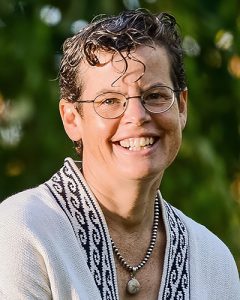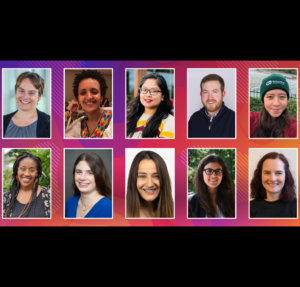Get to know the TAGC 2020 Keynote Speakers through our interview series.

Sally Otto
Sarah (Sally) Otto is known for her theoretical studies of how biological systems evolve. Otto investigates the selective forces acting on genetic systems (recombination, ploidy level, gene duplications) and mating systems (sexual vs asexual reproduction, sexual selection, floral reproductive strategies). Complementing this approach, Otto’s group tracks yeast as they evolve to test evolutionary theories. Otto helped found the Canadian Society of Ecology and Evolution and has served as President of the Society for the Study of Evolution, among other Councils and Editorial Boards. Awards include a MacArthur Fellowship, a Guggenheim Fellowship, and the Sewall Wright Award.
What research are you most excited about right now, and why?
The most exciting shift in the field has been the ability to open the black box of evolutionary change—being able to identify the base pairs that underlie the response to selection and to connect the molecular information all the way up to evolutionary change. That was not even imaginable when I started in the field, and it’s been amazing to see.
My lab has been working on understanding how organisms are shaped not just through changes they experience in the diploid phase, but also what happens when they’re haploids. Gametes are haploids, and all sexual organisms spend time in the haploid phase; how important is that period to selection? We’re trying to figure out how evolution is shaped by what helps sperm and egg survive and thrive—not just what helps the organism survive.
What do you like about working with yeast?
It goes back to opening up that black box. We can expose yeast to new environments, see who survives, and sequence to figure out how they survived. Normally in evolutionary biology, you start with an organism, and you phenotype to understand what traits are present and how they’re evolving, and eventually you get to genes. With yeast, it’s almost the reverse. We use the genes to understand the phenotype because there’s often not a very clear visible change to help us understand how its evolving.
I started working with yeast because you can easily manipulate ploidy, how much sex they have, and when they have it. Even though they’re a classic “model” organism, yeast are surprising. They’re less likely to do what we expect them to do than you would imagine, and as a theoretician, I love that; it makes us throw out assumptions and suggest new hypotheses and new models.
What advice do you have for early career scientists?
From the very beginning, I felt that it was important to balance my life—to continue doing sports and reading and spending time with friends and family and so on. I knew I needed to keep a balance of activities to be happy. For me, that balance was key to being a successful scientist, allowing my brain to relax and explore creatively. Something that helps me is to imagine myself in old age reflecting back on my life: what would I be disappointed about missing in life? Then I make sure to add that into the mix! I strive for balance and encourage it in my students.
TAGC aims to foster collaboration between communities and disciplines. Can you give an example of a collaboration that really helped your work?
There are so many! The work that I do is at the boundary between biology, math, and computer science, so I have always collaborated across disciplines and had students from different fields. The different skills and perspectives allow us to work on problems that we couldn’t tackle using only one approach. Math allows us to explore the intricacies of biology and to correct errors in logic, while biological experiments show us which assumptions need to be relaxed and reveal brand new phenomena. This intertwining of math and biology is what brought me to the field and continues to fascinate me.
Select Publications from the Otto Lab
Theory in service of narratives in evolution and ecology
Otto SP, Rosales A
Am Nat. 2019. [In press]
Somatic mutations substantially increase the per-generation mutation rate in the conifer Picea sitchensis
Hanlon VCT, Otto SP, Aitken SN
Evol Lett. 2019 Jun 10;3(4):348-358. doi: 10.1002/evl3.121
Adaptation, speciation and extinction in the Anthropocene
Otto SP
Proc Biol Sci. 2018 Nov 14;285(1891). doi: 10.1098/rspb.2018.2047
Haploid selection, sex ratio bias, and transitions between sex-determining systems
Scott MF, Osmond MM, Otto SP
PLoS Biol. 2018 Jun 25;16(6):e2005609. doi: 10.1371/journal.pbio.2005609
The genome-wide rate and spectrum of spontaneous mutations differ between haploid and diploid yeast
Sharp NP, Sandell L, James CG, Otto SP
Proc Natl Acad Sci U S A. 2018 May 29;115(22):E5046-E5055. doi: 10.1073/pnas.1801040115













